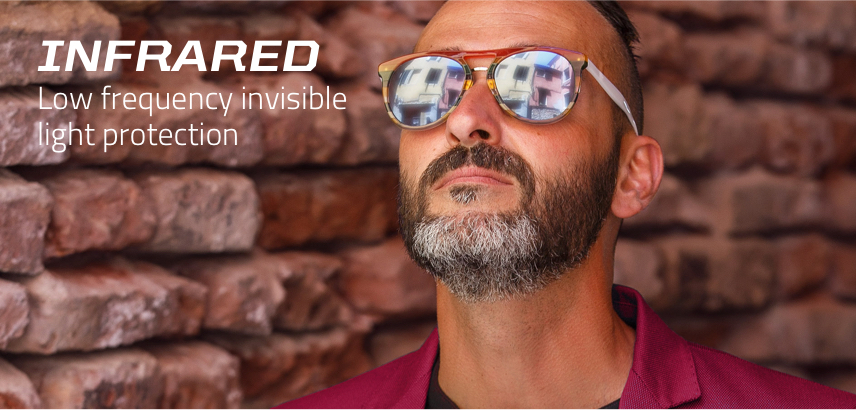Infrared radiation (IR) are electromagnetic radiation (EMR) with a wavelength between 700nm and 1mm which makes them invisible to the human eye. This radiation are part of the sunlight, which is composed of 7% UV radiation, 39% visible radiation and 54% infrared radiation.
IR are also called thermal radiation because they are often perceived as heat. Depending on the temperature, they extend from infrared to ultraviolet through visible light.
Furthermore, depending on the wavelength, IR could penetrate the tissues and cause significant damages. Infrared radiation are divided into three bands:
IR-A [750nm-1400nm]
maximum penetration depth, can reach the retina and the adipose tissue.
IR-B [1400nm-3000nm]
they cannot reach the retina, they enter the blood vessels without reaching the adipose tissue.
IR-C [3000nm-1mm]
they reach only the epidermis and the cornea causing thermal lesions to the skin.
Consequently, greater is the
wavelength, lower is the penetration
depth of the tissue.

What are the effects of IR on our eyesight?
The harmful effects of infrared radiation on our sight are various.
The main ones, which involve health and everyday life activities, are:
CATARACT
infrared light has cumulative effects and could accelerate the deterioration of the retina and the crystalline lens.
LACRIMAL EVAPORATION
the IR’s photothermal effect increases the lacrimal evaporation causing the dry eye syndrome.
Moreover, IR could be damaging even from an aesthetic point of view. Infrared radiation, in fact, contribute to the destruction of collagen in the eye contour causing wrinkles and premature aging.
When are we most exposed to IR rays?
The danger of thermal radiation varies depending on the temperature and begins to be extremely harmful after 500°C. For this reason, some workplaces such as foundries, blast furnaces and glassmakers are worst than others. It is very important for people working in those work places to protect their eyes from damages caused by thermal radiation. Therefore, it becomes fundamental for the companies to invest in prevention for their employees.
What can we do to counteract this disorder?
Thanks to a particular coating that blocks part of the infrared radiation, it becomes possible to counteract the risk of cataract, slow down lacrimal evaporation and prevent premature aging of the skin in the eye contour area, leaving the tissues more elastic.

Prevents lacrimal evaporation
Avoid cataract formation
Contrasts skin aging
This coating, suitable for all types of lenses,
could become an important ally for your
sight, ensuring eye comfort all day long.

 Follow updates on LinkedIn
Follow updates on LinkedIn